Organizational Change: Cracks in the Transformation Playbook
New research report by TalentLMS and WorkTango reveals how blind spots in organizational change erode employee trust, belonging, and culture. The data uncover key roadblocks to well-led change and how to overcome them.

Caught in the skills gap: 45% of employees say they need new skills to adapt to change. Yet close to half are not receiving enough learning opportunities to do so.
Key highlights
Trust in leaders breaks down
50% of employees say their trust in company leadership was negatively affected by the organizational change.
Employees left unheard
46% of employees were not given opportunities to provide feedback on the impact of change.
Change turns up the tension
59% say their stress levels were negatively affected by organizational change in their company.
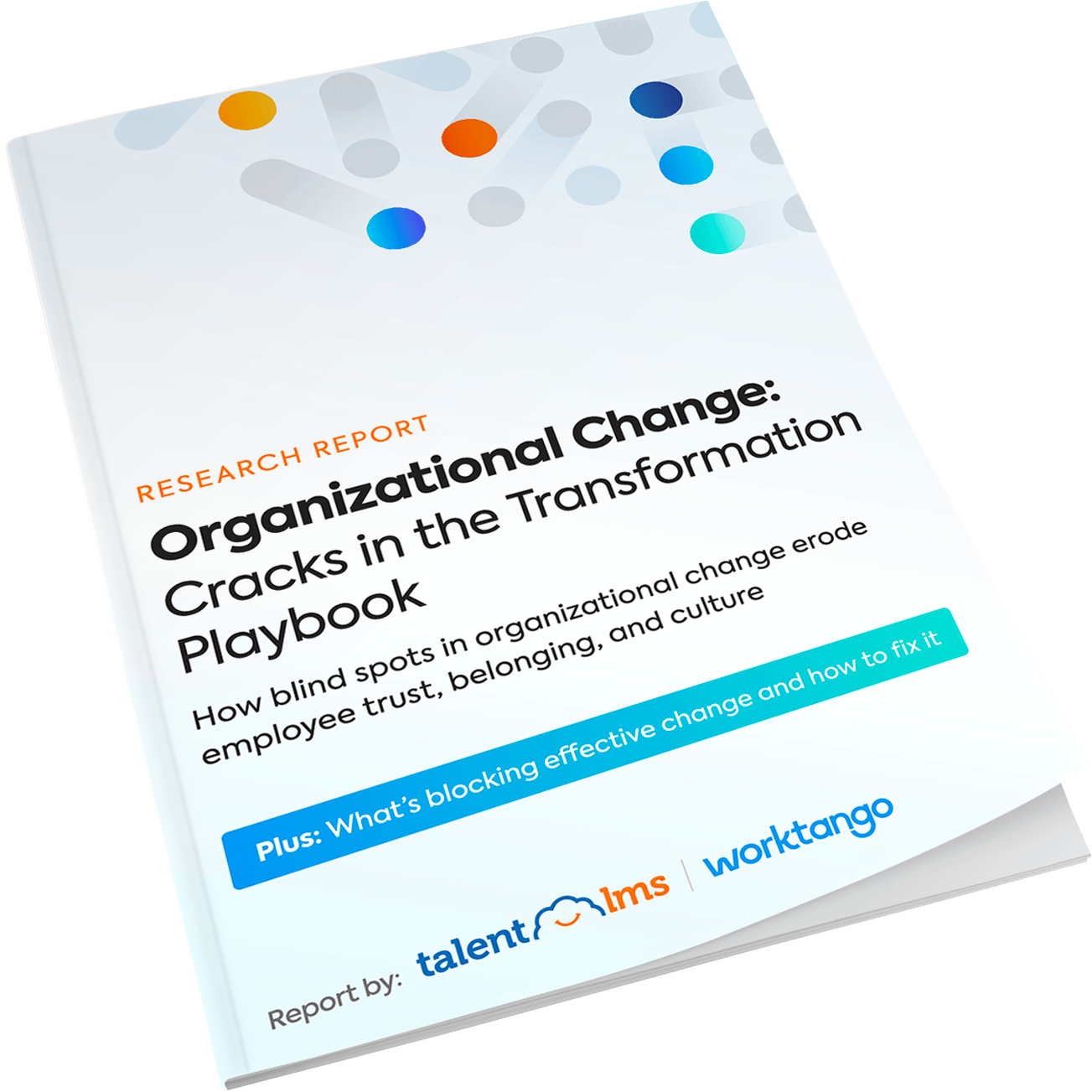
Research takeaways
Why transformation misses the mark
Human barriers to change
Leaders say the biggest barriers to change aren’t tools or systems. They’re emotional. Low morale and engagement, employee resistance, and poor communication are dragging down transformation efforts. This points to a clear need for stronger support, transparency, and clarity from the top.
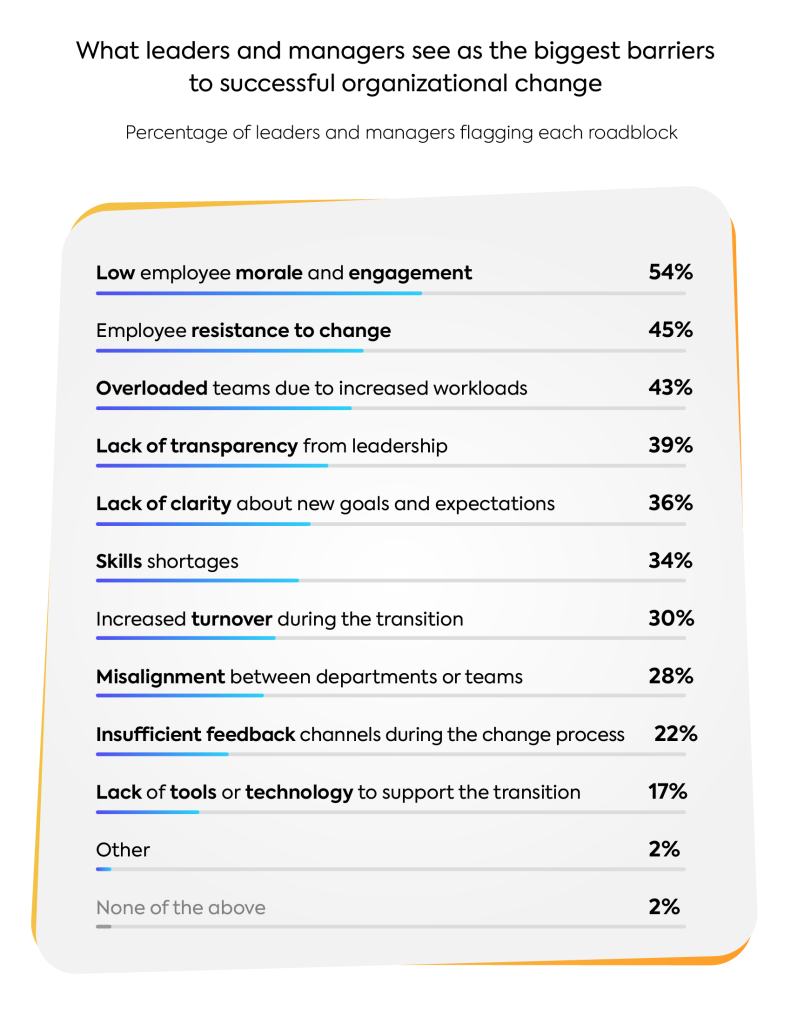
The emotional cost of change
Employees are feeling the strain of change on a deeply personal level. Emotional challenges like uncertainty, instability, and a loss of trust are among the most common barriers they face during workplace transitions. On top of that, heavier workloads and team disruptions are amplifying the pressure.
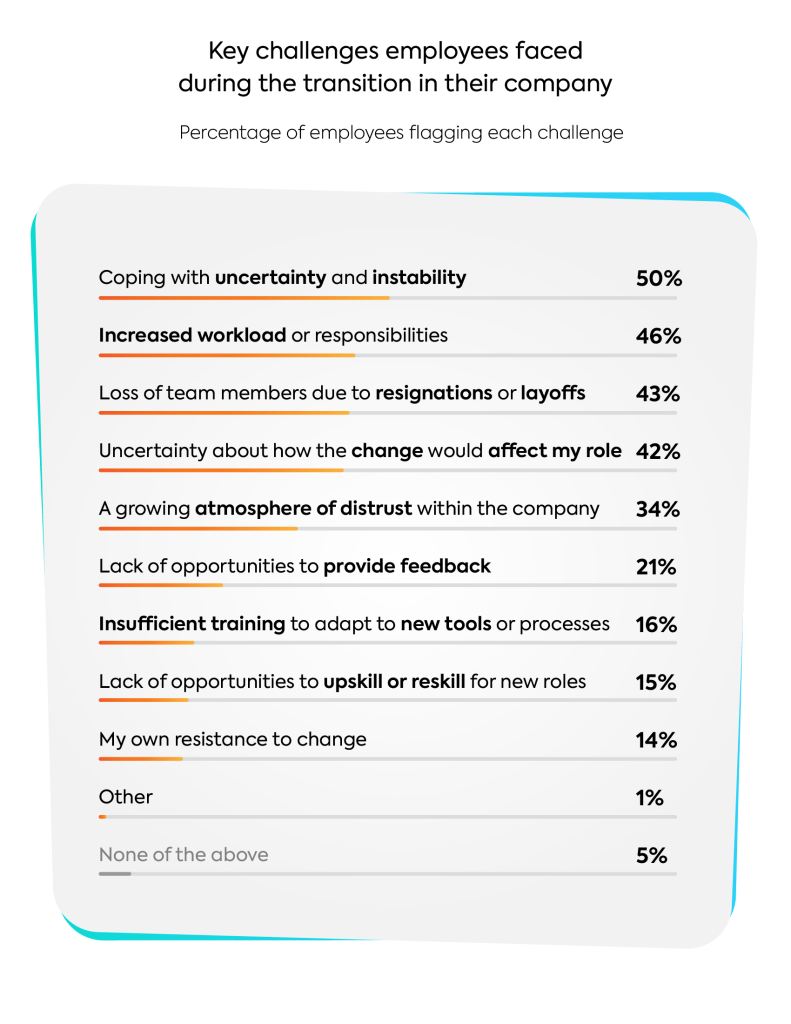
Friction in the playbook
The cost of getting change wrong
Shattered workplace stability
43% of employees said their job security had been negatively affected by organizational change, while 45% said their job satisfaction declined.
Change drives turnover
Over one-third (35%) of employees said they were more likely to leave their company because of the organizational change.
Support falls short
39% of employees said their company didn’t provide adequate support and resources to help employees navigate the transition.
Learning takes a back seat during change
Leaders recognize that skill gaps can derail change: 34% of surveyed leaders and managers agreed that skill shortages could hinder their company’s ability to successfully navigate change. However, that knowledge isn’t being matched with action.
The data revealed that most companies aren’t providing employee training to help them keep up: 47% said their company didn’t provide enough learning and development opportunities during the transition period. Without building new skills that match the demands of change, even the strongest strategy can fail.
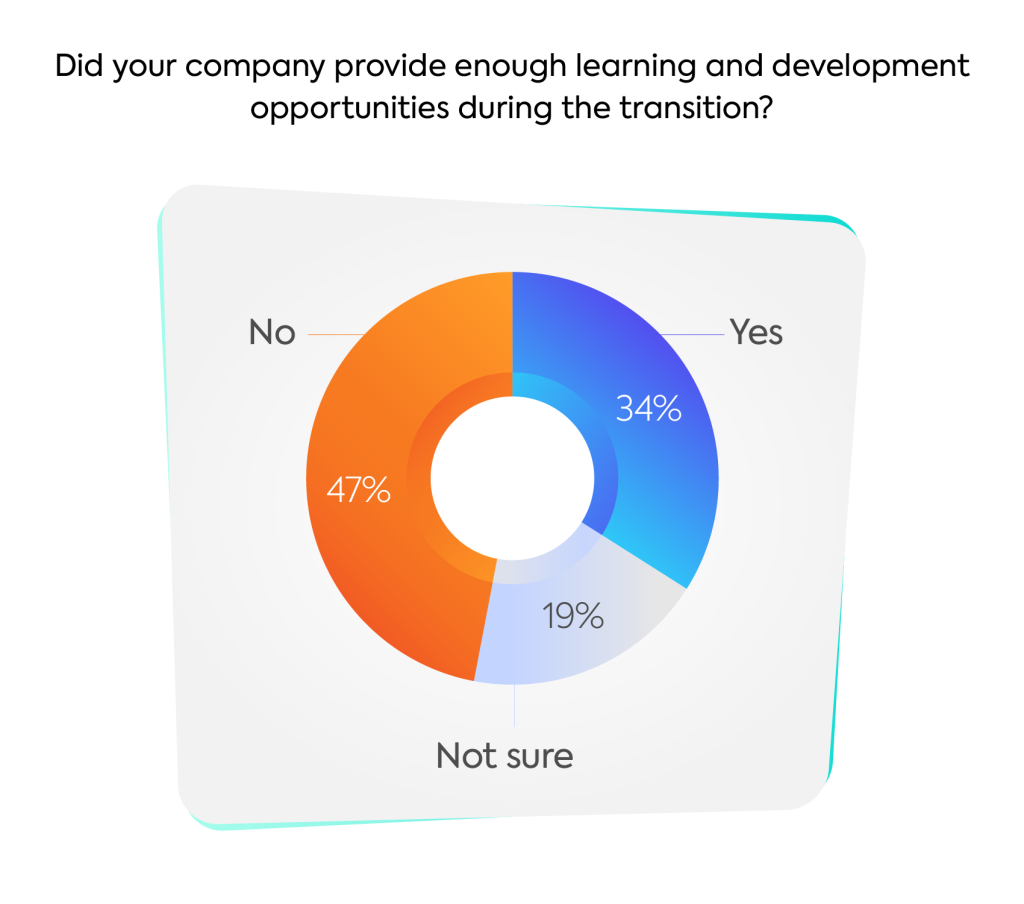
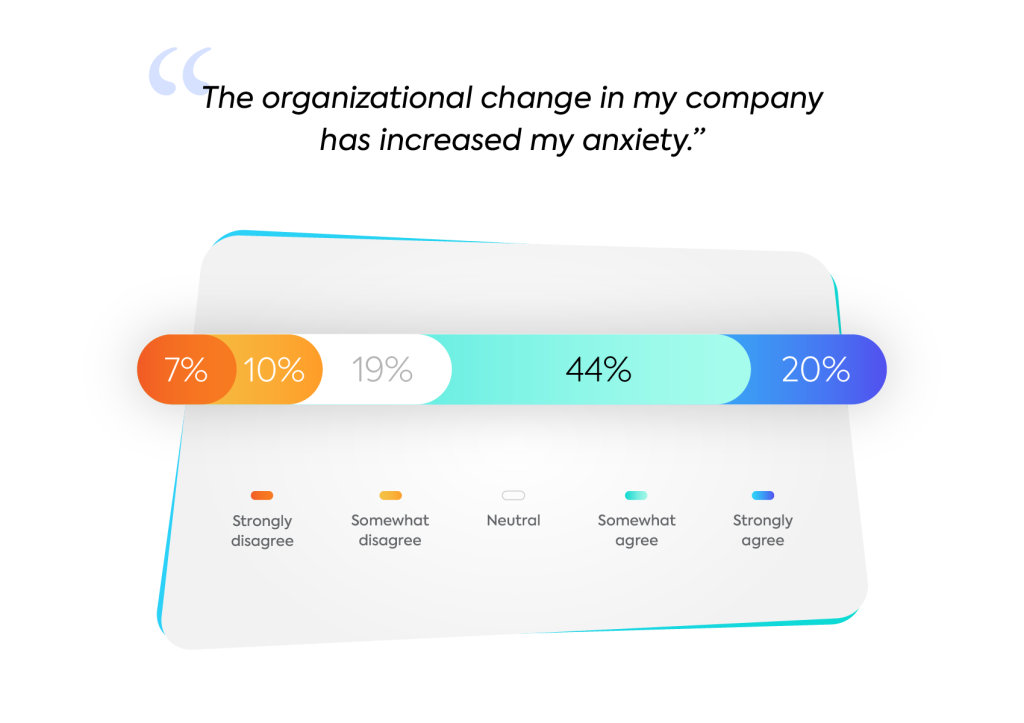
Change takes a toll and support falls short
Close to two-thirds of employees (64%) reported increased anxiety due to organizational change, while 52% felt burned out. Yet only 12% had access to mental health resources to help manage these pressures. Moreover, 46% faced heavier workloads during transitions.
It’s no surprise that 34% of employees report a decline in work-life balance due to the change. So, what’s the bigger picture here? Employees are running on empty. And they are left to cope with the emotional toll of change on their own.
Unheard employee voices
For the most part, change is being delivered to employees, not built with them: 46% weren’t asked for any feedback on the effects of the change in their organization. The result? A process that feels top-down and disconnected. Employees are left out of the change conversation.
This weakens engagement, limits trust, and causes uncertainty and stress. To close the gap, organizations should create structured feedback loops that keep communication flowing in both directions.
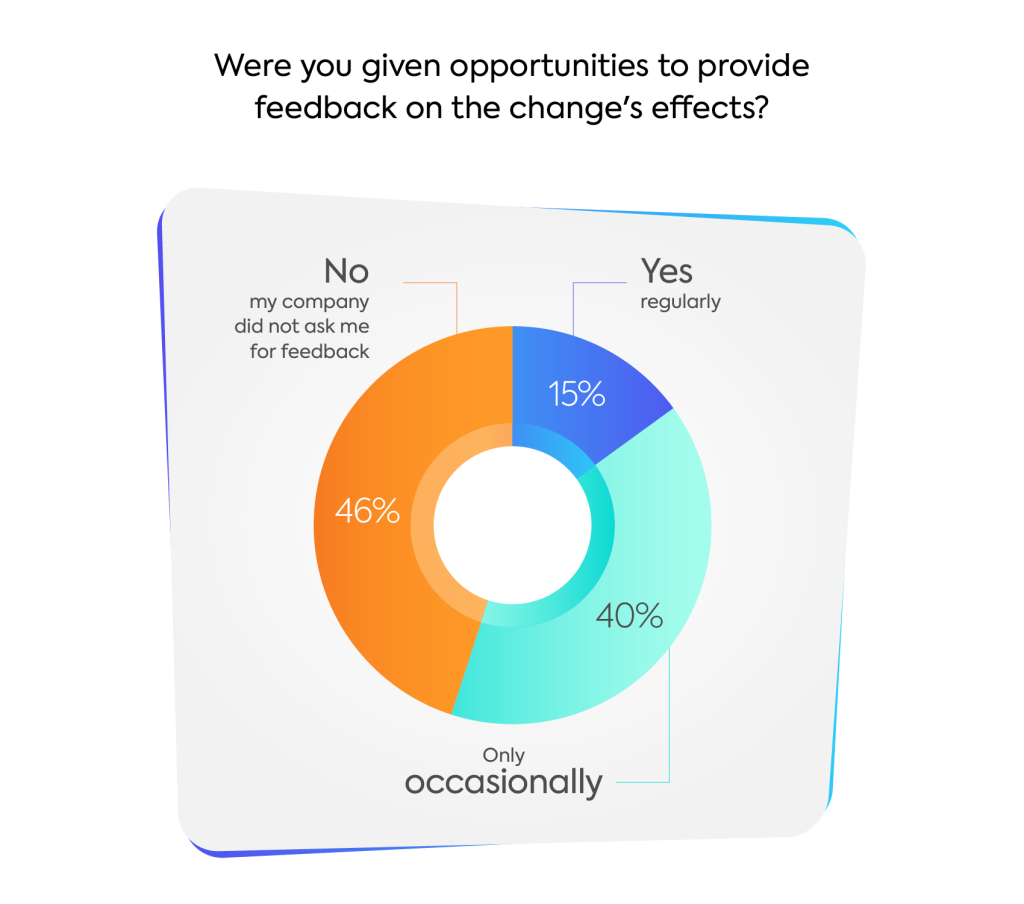
Download the full-scale report
L&D is key to driving organizational success. Leverage the insights from the report to power your growth initiatives.
Dive deeper into original research by TalentLMS

Build a strong learning culture in your organization with TalentLMS
Sign up in seconds, test the platform forever, upgrade whenever.


